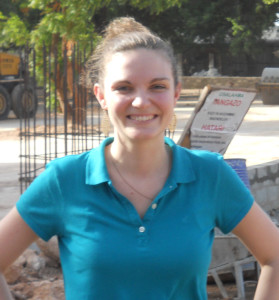First Person Perspective from Kupona’s Executive Director
 The first time I visited a labor and delivery ward in Tanzania, I was six weeks pregnant. Even though I knew intellectually that my birth experience would be nothing like what I was watching, I could only react emotionally to the scene around me. So many women crowded onto so few beds in a wide-open labor room. Laboring skin to skin with other mothers-to-be, with spouses and other support waiting in the sun, sporadic attention from the overwhelmed nursing staff continuously circling the room, and almost absolute silence. These women made no screams of pain, and did not call out for a nurse or doctor. They just breathed, adjusted their positions as they were able in the limited space, and, when it was truly go-time, gave a cry that brought a nurse over to lead them to the delivery room.
The first time I visited a labor and delivery ward in Tanzania, I was six weeks pregnant. Even though I knew intellectually that my birth experience would be nothing like what I was watching, I could only react emotionally to the scene around me. So many women crowded onto so few beds in a wide-open labor room. Laboring skin to skin with other mothers-to-be, with spouses and other support waiting in the sun, sporadic attention from the overwhelmed nursing staff continuously circling the room, and almost absolute silence. These women made no screams of pain, and did not call out for a nurse or doctor. They just breathed, adjusted their positions as they were able in the limited space, and, when it was truly go-time, gave a cry that brought a nurse over to lead them to the delivery room.
In the delivery room, a smaller set of simple metal frame beds were lined up in rows. Women screamed through the final moments or hours of birth; nurses, assistant medical officers, and the rare trained MD hustled among the beds to catch and tend to babies as they arrived, and to do what they could to prevent death. There was no coaching through each push or discussion of epidurals. There were no calm explanations of what was happening, and there were no promises that everything would be ok. And everyone was fervently hoping for two things: that a c-section wouldn’t be needed, and that at least one bed would be available when it was the next woman’s turn.
We watched a safe delivery, a mother who would survive. When I made it back out into the Dar es Salaam heat, I gasped, “I don’t think I ever want to give birth”.
“When you have a baby, it will be nothing like that for you,” replied my guide. And of course, it wasn’t.
My guide was our absolute rockstar of a Technical Advisor for our capacity-building initiative, a Tanzanian Ob/Gyn named Dr. Brenda D’Mello. I’ve since visited several other regional health facilities where we are working. Overcrowding, lack of skilled personnel, and dread of an emergency are persistent problems, but the improvements made in the last couple of years are reasons for hope. On my most recent visit, Dr. D’Mello walked out of a ward smiling – we had just watched one of the nurses she had trained deliver a baby with “WHO perfection”.
The capacity-building initiative is one key piece of a program that Kupona has developed to address maternal and neonatal mortality in Tanzania. The second is the creation of a new, specialized facility to provide badly needed physical space and emergency obstetric care.
It can be paralyzing to consider the work to be done in Tanzania, particularly in its biggest urban area, to make childbirth a moment of safety and joy, rather than of fear. More skilled doctors and nurses, more supplies, stronger processes for identifying and referring high-risk cases, more accessible family planning – all of these needs are urgent. But our program, undertaken in partnership with the Government of Tanzania, is an answer to a heartbreaking problem.
Working from the U.S. to address problems in Africa often raises questions about program management and efficiency. But we have an amazing implementing partner in CCBRT, whose professionalism, commitment to quality, and respect in the community and internationally is unmatched. Our model and method are distinct, and create an opportunity for Americans to have an impact on the infrastructure of entire region of a country, indeed, of an entire country, without sacrificing transparency and cost efficiency.
I am a one-person staff in the US – all of the other personnel are where we believe they should be: on the ground in Tanzania, saving the lives of women and babies. But, to harness the power of American donors, volunteers, and other supporters to bring about true change, we need people who can lead our efforts to increase the profile of and resources available for the work we are doing. We know that there are individuals and networks unknown to us, who share an interest in and passion for global women’s health, East Africa, and innovation in development solutions. With the countdown on to achieve the UN’s Millennium Development Goals, we are confident that the calls to step up efforts to end maternal and neonatal mortality will be answered, and hope that Americans will be among those answering it.

